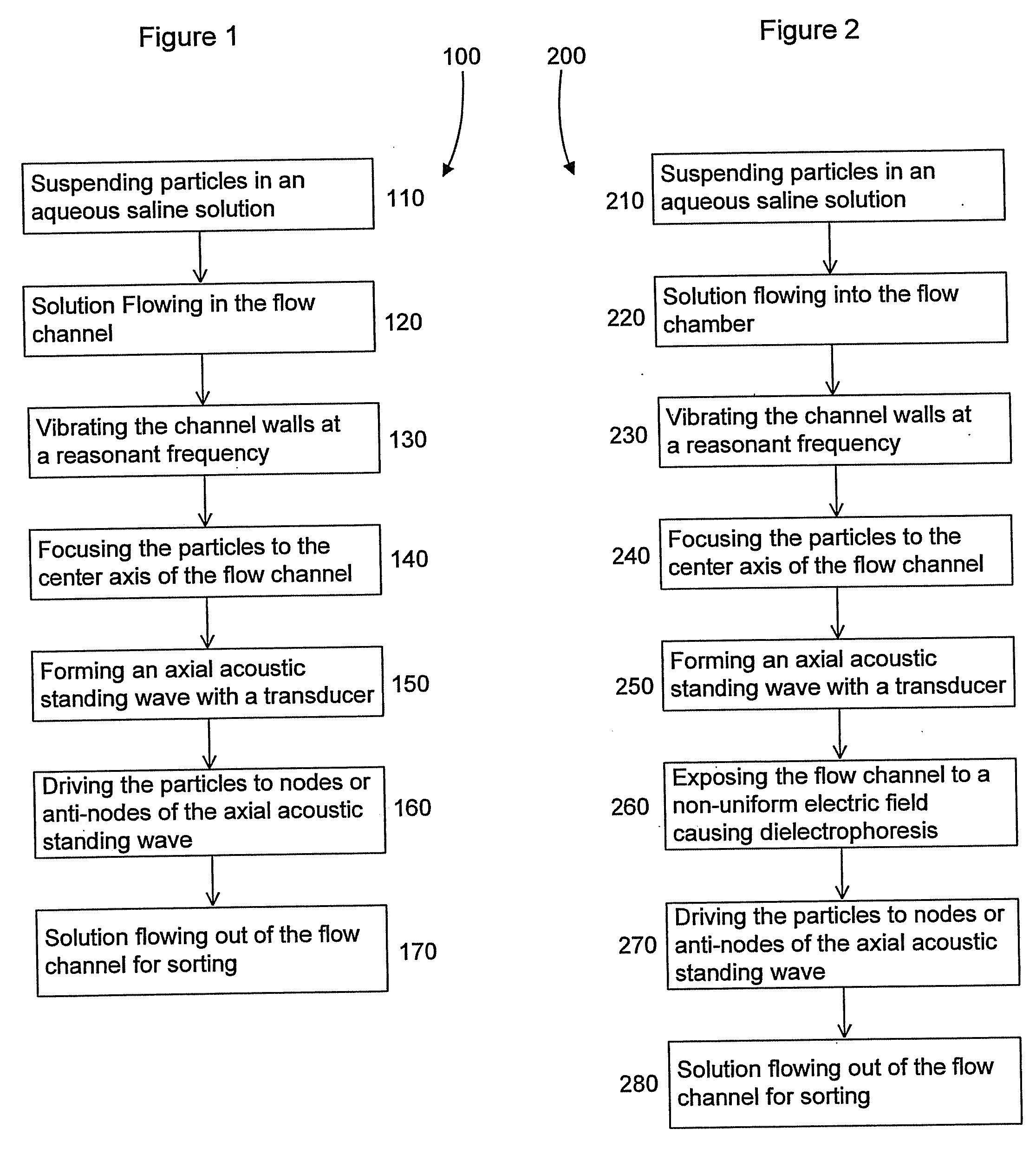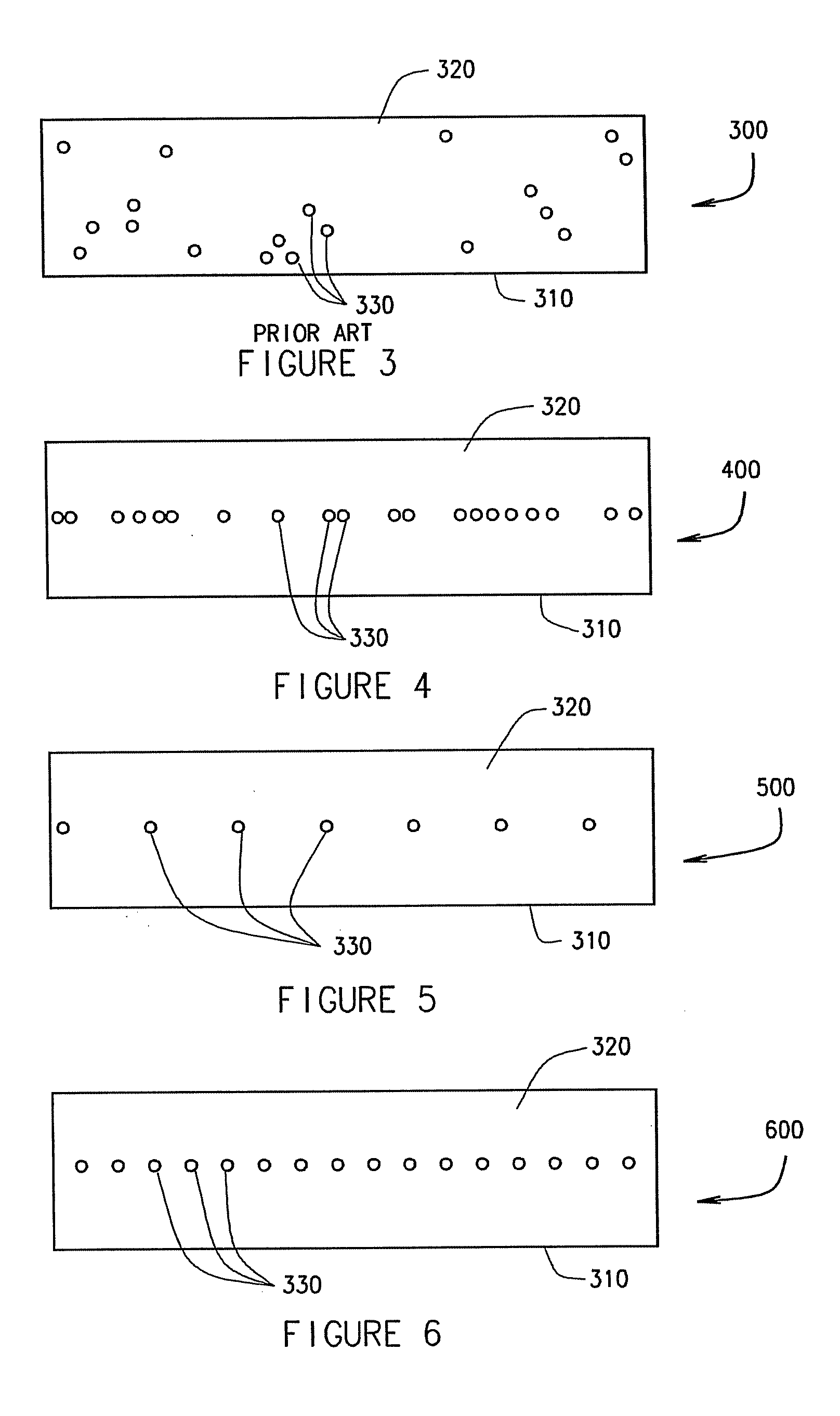Method for non-contact particle manipulation and control of particle spacing along an axis
- Summary
- Abstract
- Description
- Claims
- Application Information
AI Technical Summary
Benefits of technology
Problems solved by technology
Method used
Image
Examples
Embodiment Construction
[0021]FIG. 1 illustrates a flow chart of a method for controllably spacing particles along an axis using acoustic standing wave fields 100 according to an embodiment of the present invention. The first step in the process of controlling the spacing between particles is suspending the particles in an aqueous saline solution 110. Next, the step of the solution flowing into the flow channel 120 occurs, where the step of vibrating the channel walls at a resonant frequency 130 takes place. The vibration of the chamber walls at a resonant frequency causes a radial acoustic standing wave field to form, which performs the next step of focusing the particles to the center axis of the flow channel 140. At the same time, the step of forming an axial acoustic standing wave with a transducer 150 occurs, where the axial acoustic standing wave is parallel to the center axis of the flow channel. This axial acoustic standing wave causes the step of driving the particles to nodes or anti-nodes of the...
PUM
 Login to View More
Login to View More Abstract
Description
Claims
Application Information
 Login to View More
Login to View More - Generate Ideas
- Intellectual Property
- Life Sciences
- Materials
- Tech Scout
- Unparalleled Data Quality
- Higher Quality Content
- 60% Fewer Hallucinations
Browse by: Latest US Patents, China's latest patents, Technical Efficacy Thesaurus, Application Domain, Technology Topic, Popular Technical Reports.
© 2025 PatSnap. All rights reserved.Legal|Privacy policy|Modern Slavery Act Transparency Statement|Sitemap|About US| Contact US: help@patsnap.com



